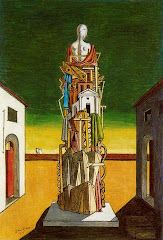Uma viagem no Barroco - 21 Johann Kaspar Ferdinand Fischer - Chaconne (1665-1746)
Johann Kaspar Ferdinand Fischer - Chaconne
 Johann Casper Ferdinand Fischer was born in Germany around 1670, though we shall never be certain when. We find the first record of his existence in the mid-1690's when appointed Hofkapellmeister to the Margrave Ludwig Wilhelm, and it was the brilliance that Fischer brought to music at the court that made him an important musical figure. Obviously a fine harpsichordist, he was responsible for bringing a French influence into German music. There is just one question mark that remains unanswered, and that surrounds the variability of the quality of music which carries his name, leading to the speculation that there may have been two - or even three - generations of Fischers who contributed to the works that carry his name. That has been given further substance by the fact that Fischer would have had to compose for over 60 years to cover the approximate dates of composition, which would have been a long time in the early 18th century.
Johann Casper Ferdinand Fischer was born in Germany around 1670, though we shall never be certain when. We find the first record of his existence in the mid-1690's when appointed Hofkapellmeister to the Margrave Ludwig Wilhelm, and it was the brilliance that Fischer brought to music at the court that made him an important musical figure. Obviously a fine harpsichordist, he was responsible for bringing a French influence into German music. There is just one question mark that remains unanswered, and that surrounds the variability of the quality of music which carries his name, leading to the speculation that there may have been two - or even three - generations of Fischers who contributed to the works that carry his name. That has been given further substance by the fact that Fischer would have had to compose for over 60 years to cover the approximate dates of composition, which would have been a long time in the early 18th century.Possibly his most outstanding work, the Musicalischer Parnassus, published in 1738, represents the fusion of French and German styles. In the form of nine suites, they transform the style of French orchestral dances to the more restricted tonal scale of the harpsichord. Yet Fischer achieved works of a vivacity and piquant pleasure, many that would rival in impact and melodic invention the finest keyboard music of Scarlatti. Each suite carries the name of one of the Muses, and can be seen as a reflection of the supposed character of that Muse. Fischer's knowledge of French style extends to the use of the latest dance rhythms of the time, and the idea of using pairs of Minuets. This 'modern' outlook for a man probably in his late 50's or early 60's has added to the speculation of a younger hand being responsible. Though looking back, we find it consistent with a composer who had always been willing to experiment. In this case Fischer was employing many of the latest compositional styles, the rotating musical figures of the gigue in the third suite being just one example, while his oft use of broken chords, adds a distinctly humorous atmosphere to the dances. The summation is a group of short movements that prove a constant joy (Naxos).
Gustav Leonhardt joue sur l'orgue Dom Bedos de Sainte-Croix de Bordeaux la Chacconne de Johann Kaspar Ferdinand Fischer.


Sem comentários:
Enviar um comentário